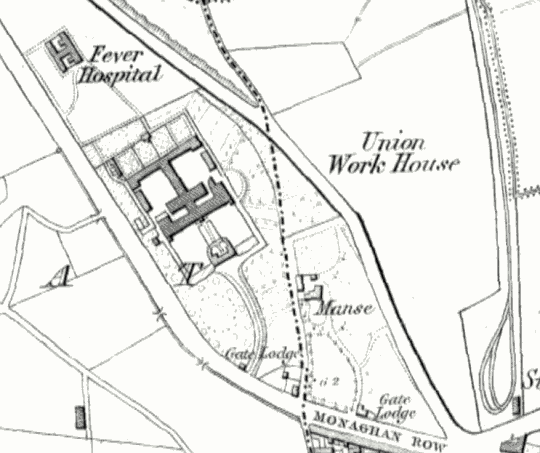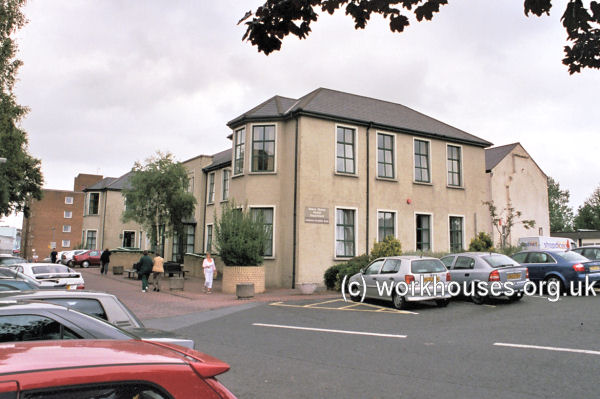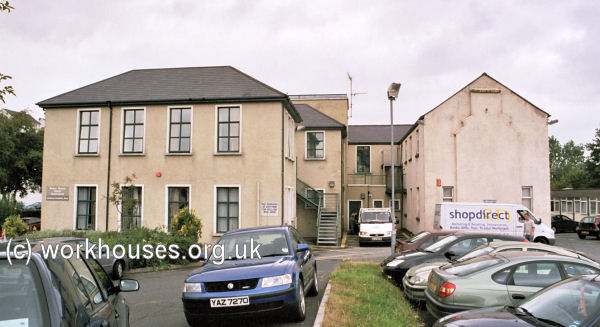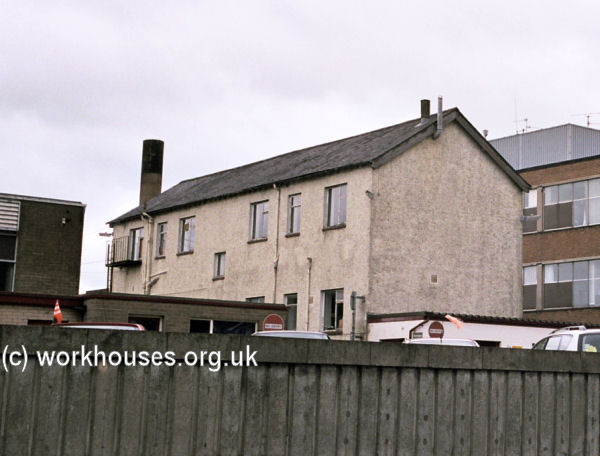Newry, Co. Down
Newry Poor Law Union was formally declared on the 3rd May 1839 and covered an area of 215 square miles. Its operation was overseen by an elected Board of Guardians, 31 in number, representing its 23 electoral divisions as listed below (figures in brackets indicate numbers of Guardians if more than one):
Co. Down:
Clonduff, Crobane, Donagmore, Drumgath, The Glen, Hill-Town, Newry (4), Ouley, Rathfriland (2), Upper Clonallen, Warren's Point (2).
Co. Armagh:
Ballybot (2), Ballymyere, Belleek, Camlough (2), Forkill, Jonesborough, Killevy, Latbirget, Mountmorris, Mullaghglass, Pointz Pags (2), Tullyhappy.
The Board also included 10 ex-officio Guardians, making a total of 41. The Guardians met each week on Saturday at noon.
The population falling within the Union at the 1831 census had been 88,181 with divisions ranging in size from Donagmore (population 2,378) to Newry itself (10,004).
The new Newry Union workhouse was erected in 1840-1 on a seven-acre site at the south-east of Newry. Designed by the Poor Law Commissioners' architect George Wilkinson, the building was based on one of his standard plans to accommodate 1,000 inmates. Its construction cost £7,100 plus £1,727 for fittings etc. The workhouse was declared fit for the reception of paupers on 14th December 1841 and admitted its first inmates on 16th December. The workhouse location and layout are shown on the 1850s map below.

Newry workhouse site, 1850s
The buildings followed Wilkinson's typical layout. An entrance and administrative block at the south-east contained a porter's room and waiting room at the centre with the Guardians' board room on the first floor above.
The main accommodation block had the Master's quarters at the centre, with male and female wings to each side. At the rear, a range of single-storey utility rooms such as bakehouse and washhouse connected through to the infirmary and idiots' wards via a central spine containing the chapel and dining-hall.
During the famine in the mid-1840s, stables were converted into day-rooms and sheds erected to accommodate an additional 100 inmates. In October 1849, the union opened a sixty-bed fever hospital about 300 yards to the north of the workhouse. The building was again designed by George Wilkinson, who proclaimed that its construction incorporated "the newest improvements with regard to ventilation, closets, kitchen, supply of water, sewerage etc... without going to extravagant expense.".

Newry former workhouse fever hospital site from the south, 2003.
© Peter Higginbotham.

Newry former workhouse fever hospital site from the south-east, 2003.
© Peter Higginbotham.
In October 1901, the union invited tenders for the rebuilding of the workhouse to plans by John Brown. Presumably, the tenders were higher than the guardians were prepared to accept and two years later tenders were sought for "certain alterations" at the workhouse. These appear to have included a further hospital block between the workhouse and the fever hospital, and a block — perhaps to accommodate "night lodgers" — at the west side of the workhouse entrance driveway.

Newry 1903 hospital block from the south-east, 2003.
© Peter Higginbotham.
The site later became Daisy Hill Hospital with little remaining of the original buildings. Only the now remodelled fever hospital survives.
Records
Note: many repositories impose a closure period of up to 100 years for records identifying individuals. Before travelling a long distance, always check that the records you want to consult will be available.
- Public Record Office of Northern Ireland, 2 Titanic Boulevard, Titanic Quarter, Belfast BT3 9HQ. Holdings include: Board of Guardians' minutes (June 1839- Dec 1947); Dispensary minutes (1852-99); Admissions and discharges (1928- Sep 1949); Offence and punishment book (1850 - 1910); Births (1892-1951); etc.
Bibliography
- The Workhouses of Ulster by Michael H Gould, 1983.
- The Workhouses of Ireland by John O'Connor (Anvil Books, 1995)
Links
- None.
Unless otherwise indicated, this page () is copyright Peter Higginbotham. Contents may not be reproduced without permission.


